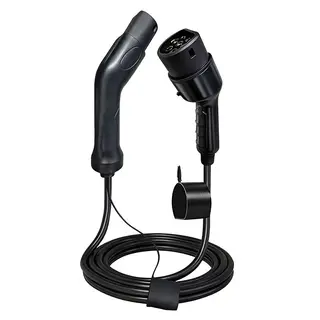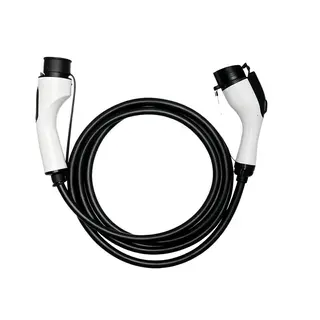With the enhancement of environmental awareness and continuous technological progress, electric vehicles are gradually becoming the first choice for more and more car owners. However, many car owners often encounter various charging issues when using electric vehicles, such as shortened battery life and low charging efficiency. In fact, as long as the correct charging methods and precautions are followed, these problems can be easily avoided. This article will provide a detailed explanation of the correct way to charge electric vehicles, making your car battery more durable and charging safer.
Before charging an electric vehicle, car owners need to make full preparations to ensure the safety and efficiency of the charging process.
First, carefully check the charging equipment and the vehicle's charging port. Inspect the charging cable for damage or aging, and check whether the charging plug is loose or deformed. At the same time, inspect the vehicle's charging port to ensure it is clean and free from any obstructions. If any faults or damage are found in the charging equipment, contact professionals for repair or replacement promptly. Do not attempt to handle it blindly yourself, as this may cause safety incidents during charging.
The choice of charging time is also important. Avoid charging in high or low temperature environments whenever possible. High temperatures can increase battery temperature, accelerate battery aging, and affect battery life; low temperatures reduce battery activity, leading to decreased charging efficiency. Therefore, it is recommended to charge in a normal temperature environment to ensure charging effectiveness and battery performance. Additionally, properly scheduling charging time is key. Try to charge during off-peak electricity periods to not only reduce charging costs but also reduce the burden on the power grid.
Mastering the correct charging steps is crucial for ensuring safe and efficient charging of electric vehicles. The following is a complete charging process to help car owners better understand and operate.
When charging an electric vehicle, the first step is the physical connection. First, insert the charger's output plug, and then connect the AC power input plug. Ensure that the charging gun and the charging port match properly, as this is the foundation of charging.
Low-voltage auxiliary power-up is the process of powering the vehicle's Battery Management System (BMS). Once the BMS is powered, it can further handshake and communicate with the charging station, confirming versions with each other. If the versions match, the BMS sends detailed vehicle information and exchanges information with the charging station. During vehicle charging, a large number of messages are generated, and if there is a mismatch, normal charging cannot be completed.
Once the physical connection and low-voltage auxiliary power-up are completed, the charging station and the vehicle will begin the charging handshake. During this process, the vehicle sends detailed battery status information to the charging station, and the station configures charging parameters such as current and voltage according to this information, ensuring the safety and efficiency of the charging process.
During charging, car owners need to closely monitor the charging status. Do not leave the vehicle unattended for long periods, and always pay attention to the condition of the charging equipment and vehicle. If the charging equipment produces abnormal sounds, smoke, or if the vehicle's charging indicator flashes abnormally, immediately stop charging and contact professionals for inspection and handling. Additionally, during charging, do not plug or unplug the charging plug at will to avoid short circuits and damage to the charging equipment and vehicle battery.
After the vehicle is fully charged, first unplug the AC power input, then remove the charger's output plug. Never pull the charging gun forcibly, as this can damage the vehicle's charging system. At the same time, after charging, the charging gun must be promptly returned to its place to prevent damage from prolonged exposure.
During the charging process, car owners need to pay special attention to certain details to ensure safe, efficient charging and extend battery life. The following are important precautions.
Generally, over-discharging and overcharging the battery are harmful. Therefore, charge frequently and avoid deep discharge. The lifespan of an EV battery is closely related to its depth of discharge. Lead-acid batteries, in particular, should not remain in a discharged state for long. To extend the service life of an electric vehicle, it is essential to properly maintain the power battery and charge it correctly.
The optimal battery range for electric vehicles is 20% to 80%. Avoid charging when the battery level is too low (below 20%) or frequently charging to 100%. This effectively extends battery life. Occasionally charging to full for long trips is acceptable, but it should not become a habit.
Slow charging is the best choice for daily use to protect the battery. It has a smaller current, reduces heat accumulation in the battery, and helps extend its life. Fast charging is convenient but accelerates internal battery aging due to high current, so it should only be used in emergencies.
Batteries are very sensitive to temperature. Avoid charging in high temperatures during summer, and in low temperatures during winter, use the battery preheating function if supported. Generally, the charging environment should be between 0°C and 45°C.
Clean and intact charging ports and equipment are crucial. Regularly inspect the charging interface to ensure no dust, foreign objects, or moisture are present. Repair or replace damaged components promptly to maintain charging efficiency.
After the battery is fully charged, disconnect it promptly. Keeping it fully charged for a long time may increase the battery's burden and shorten its life. Some EVs allow setting a charging limit (e.g., automatic cutoff at 80%), making full use of this feature is recommended.
After charging, car owners may feel relieved, but post-charging handling is equally important. Proper operation not only protects the charging equipment but also extends battery life, ensuring vehicle performance and safety. The following are post-charging precautions.
Allowing the battery to deplete to 0% before charging increases chemical reaction stress and accelerates aging. Develop good habits by charging in a timely manner to avoid extremely low levels. Although fast charging is convenient, relying on it frequently generates excessive heat inside the battery, shortening its life. Limit fast charging to reasonable frequency, such as only a few times per month.
High temperatures accelerate chemical reactions, leading to faster aging; low temperatures reduce charging efficiency and may even damage battery structure. Avoid charging under direct sun or extreme cold.
Mismatched or poor-quality charging equipment can cause unstable charging or even safety hazards. Always select manufacturer-recommended or certified equipment. Self-modified chargers or sockets may pose risks, and non-professional installation may also lead to faults or accidents.
Using air conditioning or other high-power devices while charging increases battery load and affects charging efficiency and battery health. Also, ensure the vehicle's headlights are turned off, as their energy comes from the EV's battery, not the power battery. If left on, the vehicle may not start even after a full charge.
During daily EV use, owners may encounter various charging issues. Understanding the causes and solutions helps respond calmly to emergencies, ensuring smooth charging and extending battery life.
If charging fails or is interrupted, the charging station usually displays a failure code. While these codes can be looked up online, it is more efficient to call the station's customer service or ask staff to explain the code and determine whether the fault is with the vehicle or the charger.
Charging should not exceed 12 hours. Normally, EVs can be fully charged in 8–10 hours, including 1–2 hours of trickle charging. Excessive time may indicate the battery and charger are incompatible, or the charger voltage is too low. High voltage that does not turn the indicator green may prevent full or proper charging.
Frequent small charging cycles can prematurely exhaust charge-discharge cycles and shorten battery life. However, there is no need to worry excessively; China requires power batteries to last at least 1,000 cycles. For a 500 km-range EV, 1,000 cycles allow driving up to 500,000 km, while private cars usually only reach 200,000–300,000 km in their lifetime. Therefore, normal battery degradation can generally be ignored.
Charging an electric vehicle may seem simple, but it contains a lot of knowledge. Correct charging methods can not only extend battery life but also improve efficiency and ensure safety. Before charging, carefully inspect the charging equipment and vehicle port; during charging, closely monitor the process and avoid over-discharge or overcharge; after charging, disconnect promptly and keep ports and equipment clean. Additionally, choose the appropriate charging method and equipment, avoid charging in extreme conditions, and develop good charging habits. These are all key to extending battery life. This article aims to help you better use your electric vehicle, making your car battery more durable and charging safer.



